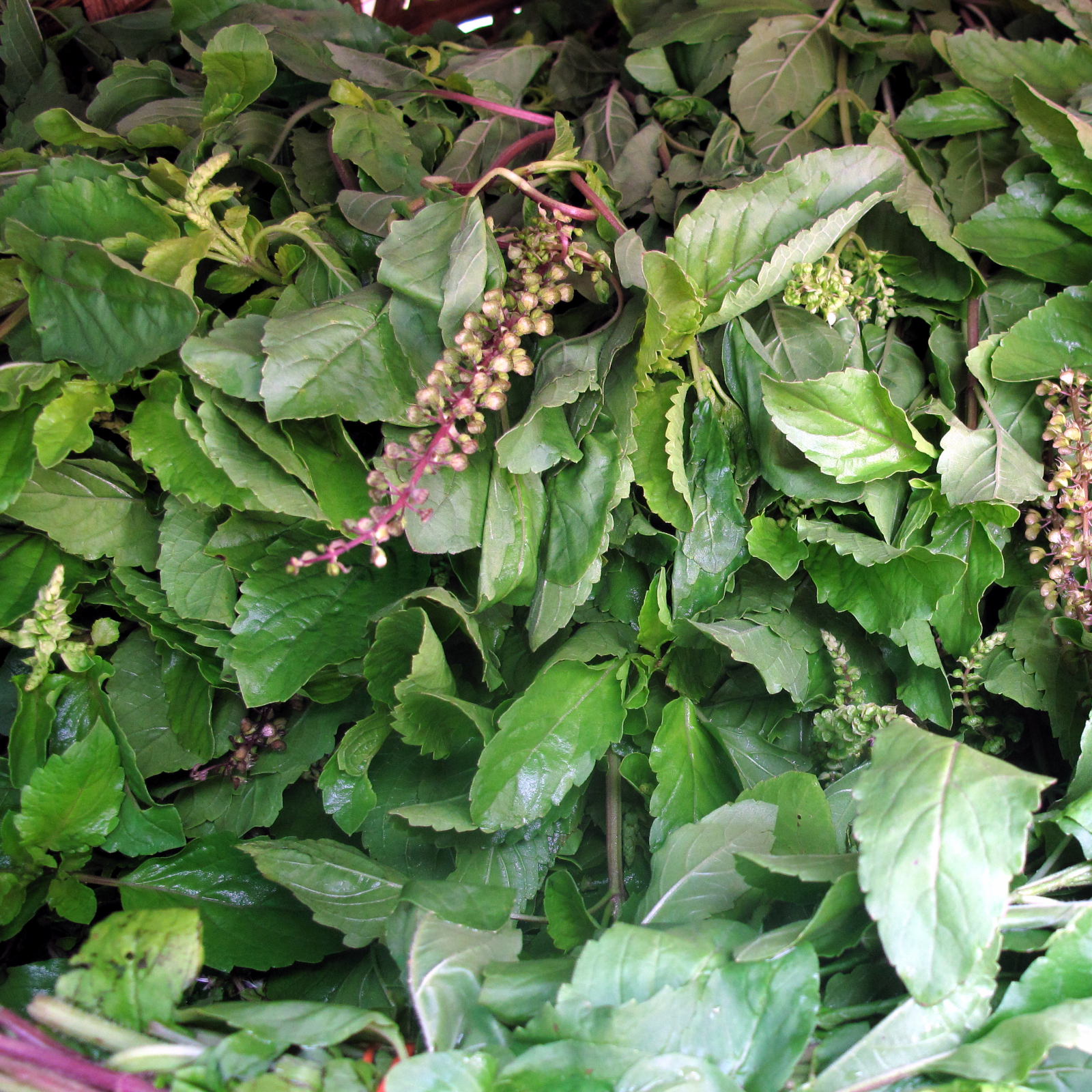The Thai name krapao seems to aptly describe the punch the leaves of this plant give to stir-fries. This relative of the well known herb central to Italian cuisine is used in a large number of Thai dishes, lending its unique fragrance and taste to every kind of meat. Holy basil is found in Thailand in two varieties. The more common ‘red’ kind (pictured) has dark green leaves and reddish stems. The ‘white’ strain has lighter green leaves and nearly white stems. The taste of the red variety is stronger and the preferred ingredient for chicken, pork and beef stir-fries. The white kind is milder in taste and generally used with seafood.

Stir-fried dishes made with holy basil may be labeled either pat krapao - “holy basil stir-fry” - or pat kee-mao - “drunkard’s stir-fry”. The difference is quite subtle, as both styles use almost the same ingredients. The issue is balance - pat kee-mao uses a larger proportion of chillies than pat krapao, making it a much spicier dish. One or the other combinations of holy basil, hot chillies, garlic and some kind of meat will show up at the curry stall on most days.
The western name of “holy basil” comes from India, where the Tulsi plant, as its known there, is indeed a holy bush, kept in many homes where it is believed to provide divine protection to the household. Naturally, holy basil plays a big part in Ayurveda, the traditional medicine of India. The ‘holiness’ carries over to the herb’s scientific name as well: Ocimum sanctum.
Speaking of science, holy basil is high in anti-oxidants and also acts as an anti-inflammatory agent. In some studies, holy basil was as effective as aspirin at reducing inflammation. In traditional medicine, holy basil is often used as a treatment for pain and arthritis. It is also credited with reducing the effects of diabetes, low libido (!) and negativity.
The anti-oxidant properties are thought to contribute to holy basil’s apparent ability to reduce the effects of stress on the body. In addition, holy basil seems to have an effect on the brain similar to that of antidepressant drugs. I guess this explains my ‘addiction’ to the hot and spicy stir-fries made with this fragrant leaf!